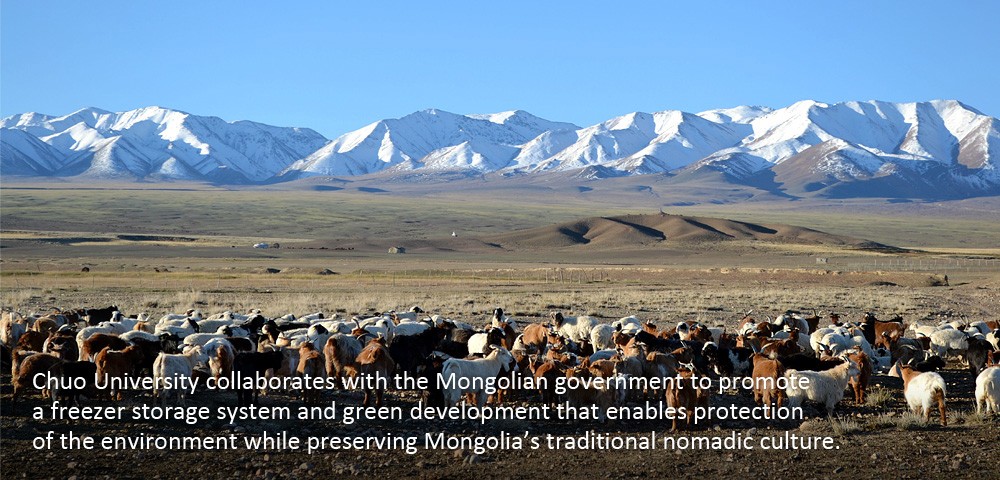

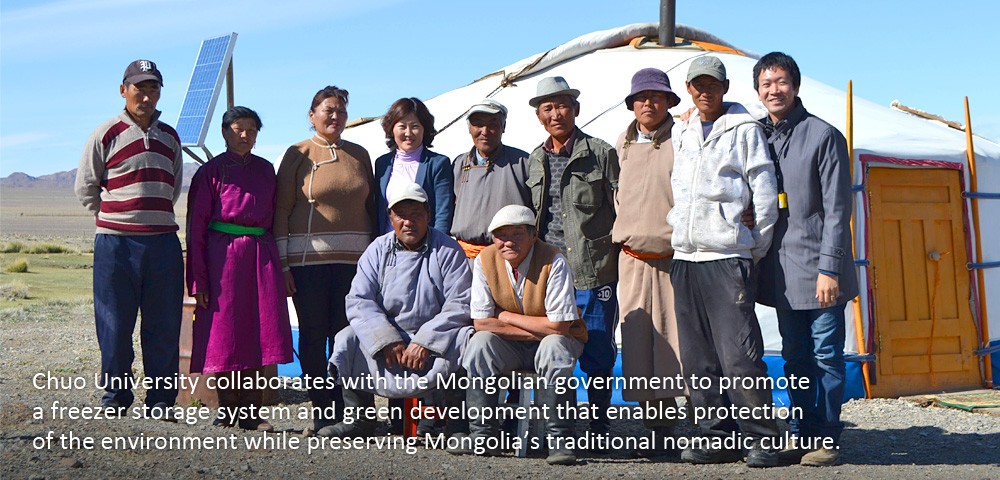
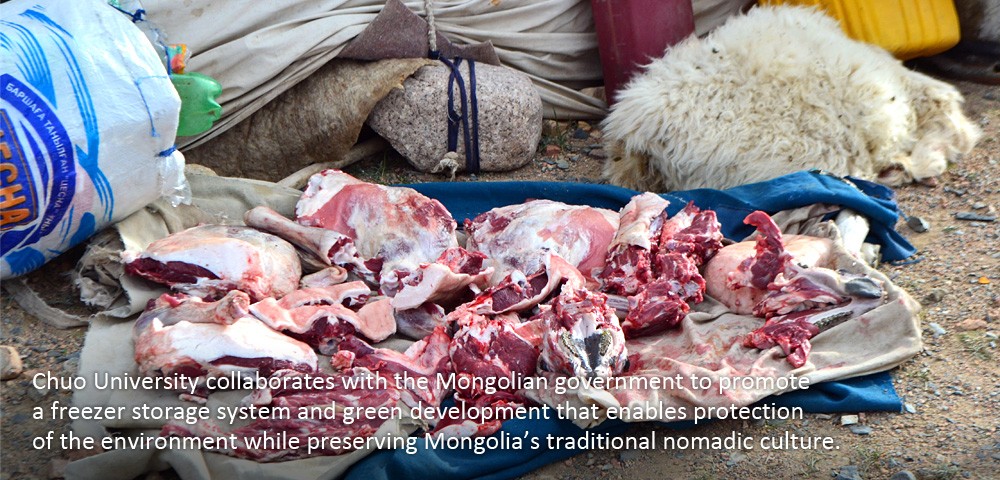
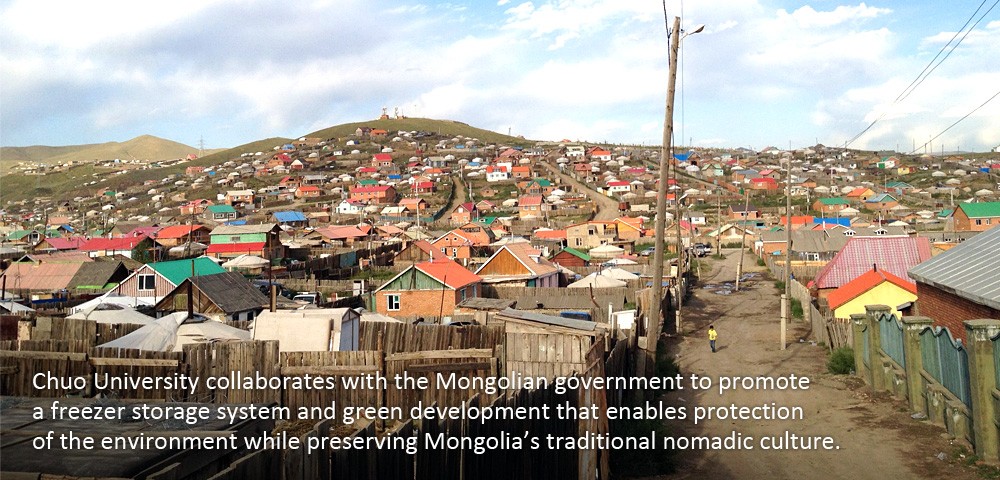
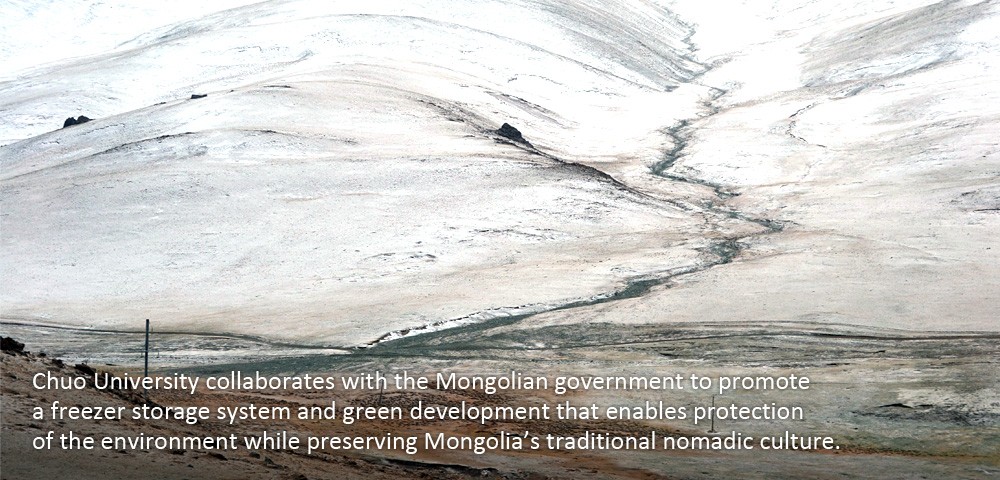
Promotion video about the JCM/MRV project including progress in the summer 2015, which was presented in “JCM project Kick-off Meeting” on September 2015 at National University of Mongolia, is now available.
You can access the video from here.
US Environmental Protection Agency (EPA) Administrator Gina McCarthy arrived in Japan on August 23, 2015 to strengthen bilateral environmental cooperation between Japan and the United States. A town hall meeting on the theme of US Climate Action was held at the American Center in Tokyo on August 26, and Chuo University Research and Development Initiative (RDI) Professor Masataka Watanabe acted as chair and moderator.
Please see the details here.
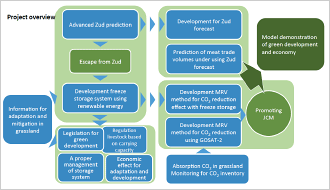

Climate change has caused the temperature in Mongolia to rise by approximately 2.4 degrees centigrade over the past 50 years. The rise in temperature has resulted in melting of the permafrost that comprises 63 percent of the country, accelerating the ongoing decrease in water resources and degradation of grasslands, and leading to abnormal weather. The largest problem is posed by Dzud which causes severe damage due to extreme cold and snow. During the winter of 2009 to 2010 in particular, Dzud resulted in the deaths of more than 10 million head of livestock, equivalent to around 20 percent of the total. Among nomadic households, 8,711 lost all the animals they owned, and livestock prices skyrocketed.
The nomadic way of life has evolved over thousands of years as a means of adapting to the environment in the arid regions of Central Asia. Climate change, however, is currently exerting a major impact on the nomads’ social ecosystem, and integrated measures to address climate change are seen to be necessary.

Our aims in Mongolia are to prevent grassland degradation through green development and to design, propose, and introduce a meat storage system based on freezer storage technology using renewable energy, as well as to establish measurement, reporting, and verification (MRV) methodology to use the Greenhouse Gases Observing Satellite-2 (GOSAT-2) to assess and verify efficacy in reducing emissions of carbon dioxide (CO2) derived from energy sources. We aim, moreover, to take integrated action on measures that can lead to competence in dealing with climate change to demonstrate to the world a road map for transition to sustainable green development and a green economy in Mongolia.
We are pursuing the project to implement a freezer storage system with the aim of preserving the pasturelands and stabilizing the nomads’ way of life to create a sustainable policy for transitioning to a low carbon society across the whole region.
The use of solar power generation to run a freezer storage system is an example of a new technology. A power-efficient freezer storage system can store meat harvested early when the risk of Dzud increases. The freezer storage equipment and management of meat distribution provides economic motives to keep the number of livestock within the environmental carrying capacity, leading to an increase in employment and income and enhancing food safety.

We are undertaking a wide range of research encompassing socioeconomic and global environmental topics. Such topics include development of a freezer storage system suitable for the Mongolian environment, improvement of Dzud prediction, distribution of Dzud forecasts, estimation of meat distribution using such forecasts, and calculation of the amounts of CO2 emitted and absorbed across the Mongolian region. We intend to collaborate with the Mongolian government to incorporate the outputs of research into a national green development plan to prevent degradation of grasslands.
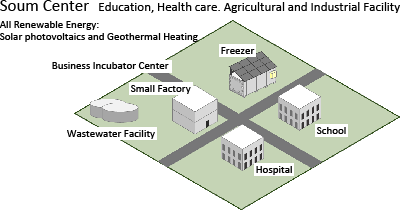
This green development project will inevitably bring about social change, but we regard it as a strategy that can strengthen nomadic networks without destroying the traditional Mongol nomadic culture, while at the same time preserving the environment.
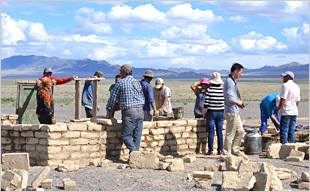
Verification of low carbon system’s efficacy
We are designing and proposing a low carbon system based on Japan’s elemental freezer storage system technology. Tailored to actual circumstances in Mongolia, the system is designed to offer efficiency at both the local and national levels. After the low carbon system’s introduction, we will verify its efficacy in reducing emissions of greenhouse gases (including CO2 and methane) derived from energy sources.
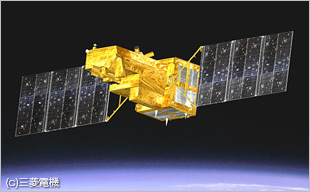
Assessment using the second GOSAT
We will verify the JCM’s efficacy in reducing greenhouse gases using GOSAT-2, the successor satellite to the “Ibuki” Greenhouse Gases Observing Satellite (GOSAT). We are also studying the methods used for observing emissions of greenhouse gases derived from energy sources in Mongolia.
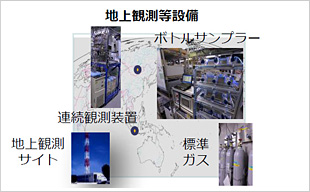
Investigation of MRV methodology
By using GOSAT-2 to observe the amounts of greenhouse gases emitted and absorbed before and after introduction of the low carbon system, we aim to establish MRV methodology to assess and verify efficacy in reducing emissions of greenhouse gases as a result of introducing the system.
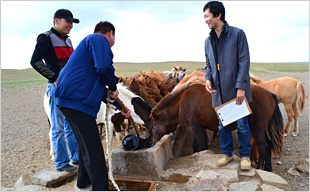
Joint Crediting Mechanism (JCM)
JCM is a system that assesses how Japan has contributed to reduced greenhouse gas emissions in developing nations by implementing countermeasures or furthering the adoption of greenhouse gas–reducing technologies, products, systems, services, or infrastructure. The system allows Japan to treat a certain amount of the reduction as its own to be applied toward achieving its reduction targets.
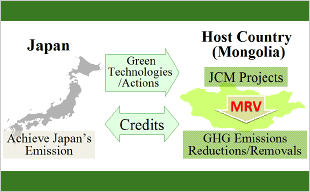
MRV
MRV refers to the measurement, reporting, and verification of greenhouse gas emissions. Measures to counter global warming enacted by every type of organization, including national governments, local public bodies, and corporations, are founded on the principle of understanding the extent to which greenhouse gases are emitted as a result of their own activities. MRV could be described as a sequential process to ensure the accuracy and reliability of the emissions amounts thus obtained.
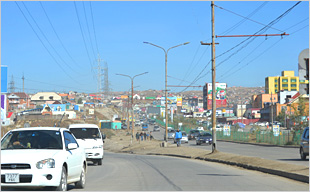
Greenhouse gas inventory
An emissions inventory is a list showing the amounts and locations of emissions of designated substances (such as air pollutants and toxic chemicals) during a certain period. A greenhouse gas inventory is one type of emissions inventory, and it shows emission and absorption amounts for gases that cause global warming (greenhouse gases) such as CO2, according to their emission source or sink.